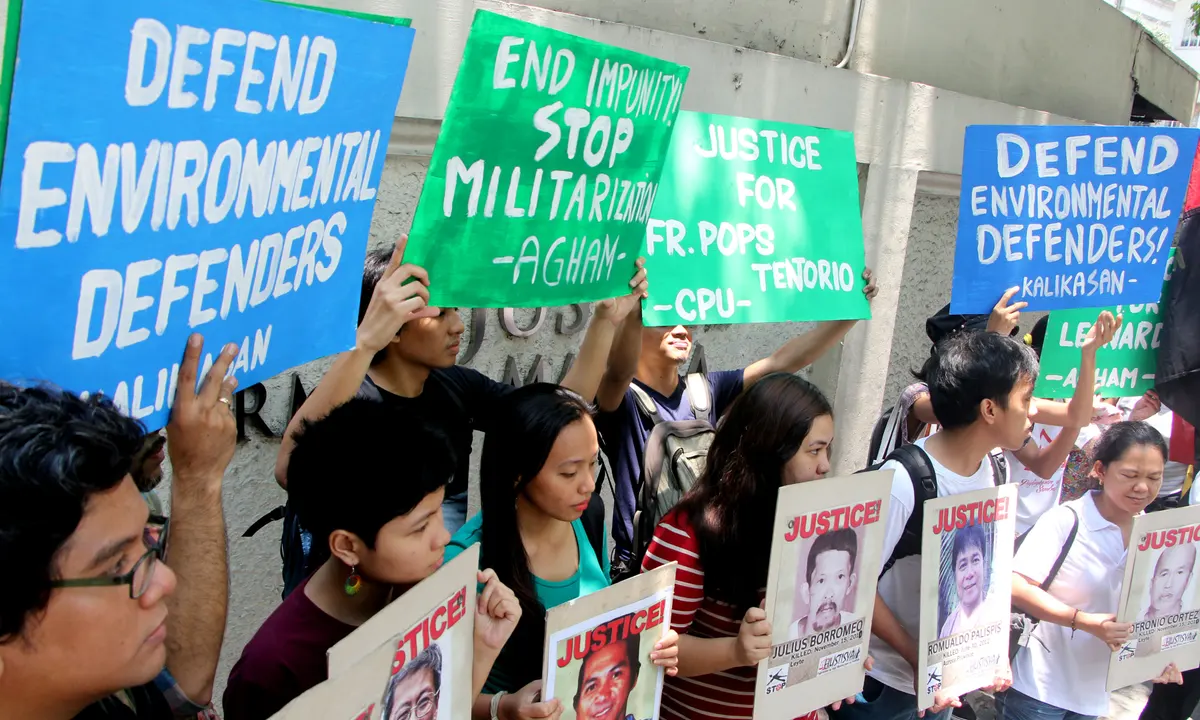In September, the international NGO Global Witness released its annual report on investigations into the murders of land and environmental activists worldwide. The organization reported a record high of 227 activists who were killed for their battles against resource exploitation in 2020. Global Witness believes, however, that the number is significantly higher but unknown due to underreporting in the worst offender countries.
Global Witness uses the term land and environmental defenders to describe the “people who take a stand and peaceful action against the unjust, discriminatory, corrupt or damaging exploitation of natural resources or the environment.” Indigenous people make up a significant portion of the environmental defenders attacked and killed, especially considering Indigenous peoples only constitute 5% of the world population today. Small-scale farmers and others dependent upon the land also composed a large number of those killed. Murders by capita were highest in Nicaragua, making it the most deadly country per capita for environmental defenders. Overall, 75% of the global murders occurred in the Americas, specifically in Central and South America.
The distribution of environmental murders varies across each industry sector. Environmental defenders that are fighting the logging industry made up the largest known murders of any sector, with 23 victims. The water and dams sector also showed dangerous numbers of activists killed, with an official total of 20. Mining and agribusiness are two significant sectors, accounting for around 30% of defenders’ killed for protesting in the last five years. Around half of the year’s total murders had no confirmed sector tied to them.
In 2020, Colombia had the most land and environmental defenders killed for their activism with a total of 65 victims. Pre-existing violence and lack of government intervention on behalf of victimized civilians and activists help explain why so many activists were killed. The COVID-19 lockdowns, however, also played a role due to a further decrease in government protections. The attackers also were able to go to people’s homes directly because the lockdowns kept everyone home instead of working, running errands, or visiting friends and family. Half of Colombia’s deadly attacks were against farmers. Crop substitution programs, a particularly deadly sector of agriculture in Colombia, accounted for 17 murders in 2020. These programs execute transitions from coca crops (cocaine) to legal crops. This switch to legal crops threatens the livelihood of criminal organizations running the coca plantations, resulting in attacks on activists promoting the transition.
In Mexico, 30 land and environmental defenders were murdered—a 67% increase from the total victims in 2019. Around half of those killed were Indigenous people. A lack of judicial action in Mexico means up to 95% of the murderers were left unpunished. Similarly, 29 murders took place in the Philippines. Due to the increasingly dangerous government in the island nation, environmental defenders attempting to prevent damaging industries from moving in or expanding are attacked with particularly strong governmentally-endorsed force. The president of the Philippines, Rodrigo Duterte, enacted an extremely strict lockdown, which allowed him to condone forceful crackdowns on those who didn’t abide by the lockdown rules. Additionally, Duterte has increased “red-tagging,”—the labeling of social and environmental activists as communist extremists—which has, and will lead to, increased attacks against those tagged.
In 2017, the United Nations Environmental Programme (UNEP) agreed to create a policy for greater protection of land and environmental defenders. The policy was published and enacted in March of 2018. UNEP considers environmental rights to be “an extension of basic human rights,” as the right to a healthy environment is considered a constitutional right in many countries. In the 2018 policy, UNEP asserts they will urge improved protection of environmental rights and defenders, push for sustainable consumption of natural resources, and call on governments and companies to take responsibility for their roles in attacks on environmental defenders. A particularly encouraging component of the policy is UNEP’s creation of a designated email through which communities and individuals can reach out in cases of existing and imminent threats to environmental and human rights. This will bypass both local and state governments who, in particularly dangerous countries, may not act on reports of human rights violations. For Global Witness reports, the email program will bypass local governments and media, which will hopefully increase the reporting of and actions against such threats.
The Global Witness 2020 report argues that people “tend to associate the climate crisis with its environmental impacts,” and subsequently ignore the increasingly dangerous effects of exploitative industries fueling the climate crisis on human beings. To mitigate the number of murders tied to environmentalists, more emphasis must be placed on protecting those people fighting the companies and governments furthering the crisis. The multidimensionality of the issue at hand requires institutional change within countries’ governments, which in turn will combat the negative impacts of climate change.
Sources
Global Witness. (2021, September). Last Line of Defense: The industries causing the climate crisis and attacks against land and environmental defenders. https://www.globalwitness.org/en/campaigns/environmental-activists/last-line-defence/
UNEP, Promoting Greater Protection for Environmental Defenders Policy, (2018, March), available from https://wedocs.unep.org/bitstream/handle/20.500.11822/22769/UN%20Environment%20Policy%20on%20Environmental%20Defenders_08.02.18Clean.pdf?sequence=1&isAllowed=y
Featured image from theguardian.com/environment/2017/jul/13/environmental-and-land-defenders-killed-in-2015-the-full-list(opens in a new tab)

